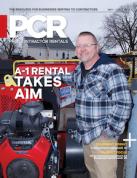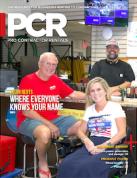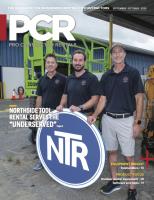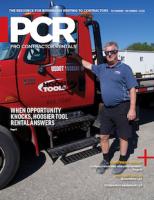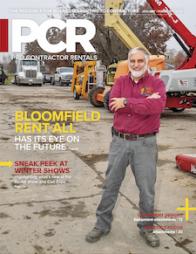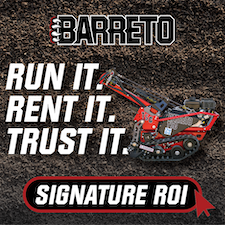Equipment insight: Concrete equipment
Today’s equipment for placing, finishing or repairing concrete is more ergonomic and productive than ever.
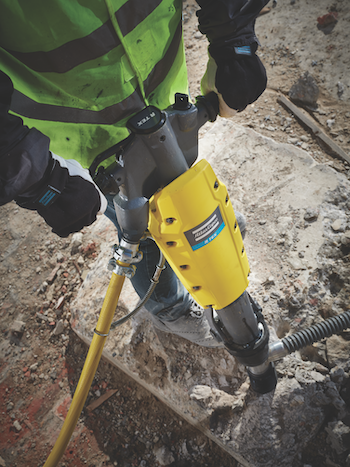 |
| The constant pressure chamber in RTEX series, which only requires air on the return stroke, reduces air consumption. This allows customers downsize to a smaller compressor because these tools require much less air than traditional breakers. |
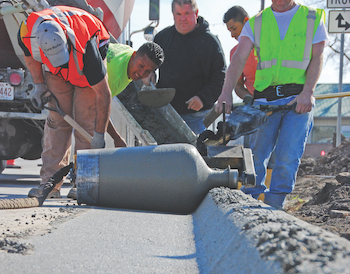 |
| Rental centers can increase demand for this equipment and improve ROI by educating customers about the options and solutions that are available to them. In addition to being lightweight and portable, Curb Roller equipment can help reduce operator fatigue as it can be operated in an upright position. The machines move and shape concrete instead of requiring sheer force by the operator. |
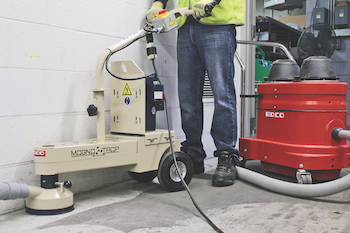 |
|
When considering surface removal equipment rental centers should consider the total cost of ownership, ease of maintenance and vendor training. For instance, concrete vacuums may utilize HEPA filters to meet OSHA respirable silica dust guidelines. If these HEPA filters require frequent changing, then the total cost of ownership is elevated each time these HEPA filters are replaced. |
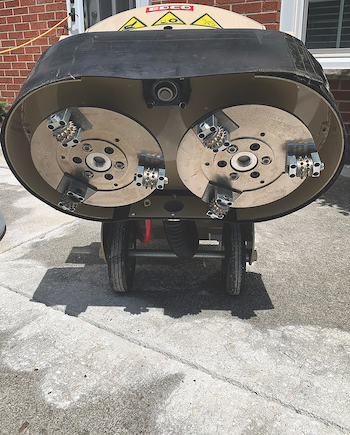 |
|
MagnaSpikes can be used for removal of epoxy paints, thermoplastic paint lines and aggressive removal of top-layer surface imperfections. Magna-Spikes can leave a concrete surface profile (CSP) of 2 or 3, depending on surface hardness and improves adhesion of thicker coatings or can be used to create a non-slip surface texture. |
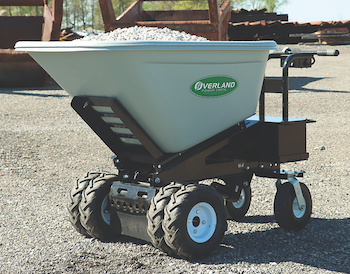 |
|
Electric power offers serious benefits to the customer with zero emissions, zero noise and virtually zero maintenance. The units are generally simpler to operate and provide enhanced safety. The Overland 950 Series and 1400 Series electric-powered wheelbarrows offer a significantly improved user experience when compared to their gas-powered counterparts. |
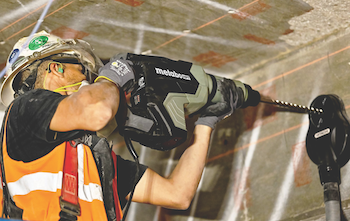 |
|
Metabo HPT (formerly Hitachi Power Tools) has a hybrid cordless and corded platform available in its concrete power tools to meet the needs of casual and heavy-duty users. The MultiVolt platform offers the freedom of portability with little to no loss in power compared to corded models. |
For many rental centers, tools and equipment that help contractors and DIYers place, cut, break, core, grind or polish concrete are a very important sales and rental segment. Pro Contractor Rentals asked leading companies about trends in concrete tools and equipment and ways rental centers can better serve customers while improving ROI.
 |
| MIKE MERRIAM Product Marketing Manager, Small Air & Tools Atlas Copco Power Technique |
Breaker options improve
When selecting pneumatic tools, consider weight, vibration level, sound, air consumption and maintenance ease. When engineers and designers are improving or making new tools, tool weight is always a focus on two levels: operator ease and power. The heavier the tool, the more breaking power it has.
There’s a balance between lighter weight for easier operation and heaviness for breaking power. For example, the new Atlas Copco RTEX series is lighter in weight than traditional breakers but produces similar power while using up to 50 percent less air.
The constant pressure chamber in the RTEX series, which only requires air on the return stroke, reduces air consumption. This lets customers downsize to a smaller compressor because these tools require much less air than traditional breakers. This also allows it to have a larger piston and higher power than a tool of similar weight. Plastic covers and shrouds are also incorporated to help reduce sound exposure.
Rental centers should be aware of the air consumption of the tools so they can properly size the air compressor or know how many tools are able to run off one air compressor. They should also be aware of the shank sizes of each tool so they can match it with appropriately sized tool steel. It’s also important to be aware of the tool steel type, as the tips are different for different applications. For example, moil point, chisel, spade and other points are used for different tasks.
Air compressors that are used with tools requiring less than 250 cfm are available on a towable two-wheeled frame with diesel engines or electric motors. Some models are also available in a utility skid-mounted frame. There are also hydraulic tools, which use a portable powerpack that can run off other hydraulic sources, such as a backhoe or excavator. Although hydraulic tools are typically more expensive than pneumatic, when mated with a power pack, they are cheaper than a pneumatic tool and a compressor combination.
Ideally, rental fleets need to be aware of product offerings and know what the customer demand is in your area as applications can vary by region and season. Atlas Copco representatives can help in these areas.
One tried-and-true way that rental centers can increase demand or increase ROI with compressed air tools is to let customers know what you have. Having a wide range of tools creates a one-stop shop scenario, bringing customer value. Share the availability of a multitude of tools, compressors and powerpacks to meet all demands. Incorporating tools with newer technologies that are lighter in weight and quieter shows concern for customers. Consuming less air means rental centers can incorporate smaller compressors in their fleets, so there is less capital cost and better ROI while also reducing global carbon footprint by using smaller engines.
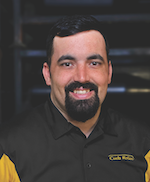 |
|
SETH ULMER |
Expand concrete equipment selection to increase placement efficiency
Finding reliable equipment that can complete more work in a wider range of places is a priority for rental customers who are looking to improve their operations. Rental centers can provide solutions that offer customers better tool efficiency and versatility.
In 2021, Curb Roller Manufacturing introduced the modular Lynx Screed System to meet the need for versatility. With this system, crews can complete flatwork with a series of linkable screed pipes to accommodate concrete pours from 3 to 22 feet wide. Unlike traditional roller screeds, the Lynx modular system removes the need for purchasing dedicated pipe lengths and offers easy adaptability for a multitude of pours. Along with its intuitive design and operation, the Lynx Screed helps decrease storage needs for rental centers and allows their customers to easily transport the equipment in the bed of their pickup truck.
Contractors in the concrete industry have struggled with logistical limitations including limits on yardage and weeks-long lead times for concrete delivery, so they need to be at the top of their game when it comes to scheduling and efficiency.
Going hand in hand with the current supply shortages the industry is experiencing, if a contractor has a damaged concrete screed, they will often look to use rental screeds while their equipment is being repaired.
Additionally, high turnover rates and labor shortages leave crews with fewer workers who also struggle with a lack of experience and application knowledge.
All of this leads to contractors looking for efficient equipment that can allow inexperienced operators to perform effectively and maintain high productivity.
Offering concrete equipment that is easy to learn and can produce quality results with less dependence on the operator’s skill level can give rental centers the opportunity to help any size of operation get to work fast and stay productive. Curb Rollers easy-to-operate roller screeds and walk-behind curbing machines give contractors the opportunity to take on more work, even with inexperienced operators.
Rental centers can increase demand for this equipment and improve ROI by educating customers about the options and solutions that are available to them. In addition to being lightweight and portable, Curb Roller equipment can help reduce operator fatigue as it can be operated in an upright position. The machines move and shape concrete instead of requiring sheer force by the operator.
Rental centers are an important resource for customers and can share the alternatives to best solve what a customer needs while helping them choose equipment that maximizes their efficiency and productivity.
 |
|
TONY CALCOLIETRO |
Pair accessories, additional equipment to the application
A diverse range of professional contractor accessories have been introduced in concrete floor grinding due to the quick-change disc technology on floor grinders. Floor grinders are typically thought of as machines that only grind concrete. However, with the correct accessory, a floor grinder can do so much more.
EDCO has simplified its MagnaTrap grinder accessory options into three primary applications: strip, grind and remove. Carbide tungserts, or Magna-Blades, are commonly used for stripping glues and adhesives off a concrete slab. Diamond accessories, or Dyma-Dots, are commonly used for grinding off concrete sealers, paints and for resolving topical surface imperfections. Poly crystalline diamonds, or Dyma-PCDs, are commonly used for removing industrial-strength coatings.
New technology such as arrow segments and bush hammers have recently been introduced to assist the professional contractor in completing a much wider range of applications.
Diamond arrow segments, or Dyma-Arrows, are shaped to undercut hard glues on top of a concrete surface. Arrow segments eliminate a two-step carbide-strip and diamond-grind process in hard glue and concrete sealer removal applications. Arrow segments save hours of labor time by consolidating strip and grind steps into one grinder pass. Dyma-Arrows leave a concrete surface profile (CSP) of 1 for proper adhesion of thin-mil paints or concrete sealers.
Bush hammers, or Magna-Spikes, are carbide-tipped rotating wheels for aggressive topical removal of many types of surfaces. MagnaSpikes can be used for removal of epoxy paints, thermoplastic paint lines and aggressive removal of top-layer surface imperfections. Magna-Spikes can leave a CSP of 2 or 3, depending on surface hardness and offers adhesion of thicker coatings or be used to create a non-slip surface texture.
Specialized grinder accessories will speed up projects so contractors can become more competitive and profitable. These accessories provide solutions to common floor grinding problems that in the past required a two-step process or the use of an alternative machine to achieve similar results.
When considering surface removal equipment, rental centers should consider the total cost of ownership, ease of maintenance and vendor training. For instance, concrete vacuums may utilize HEPA filters to meet OSHA respirable silica dust guidelines. If these HEPA filters require frequent changing, then the total cost of ownership is elevated each time those HEPA filters are replaced. Choosing a quality dust collector with Micro-Clean filtration technology reduces the need for frequent HEPA filter replacements, thus reducing the total cost of ownership. Products engineered with ease of maintenance to get tools ready to rent helps reduce service time while preparing products for a quick turnaround for the next renter.
Having a vendor partner that is well-versed in concrete surface preparation products can help rental centers navigate the equipment and accessory selection process for a particular application. Vendors with online training platforms and product application videos such as those that can be found at www.EDCOed.com, in conjunction with online virtual training seminars and in-store field representative visits, can help rental centers become more comfortable with concrete equipment. This increased familiarization with concrete products through various training efforts empowers rental associates to create meaningful dialog with customers to identify a project’s complete equipment and accessory need.
To increase demand and ROI for concrete equipment, a rental center should pair up other product categories with its rental opportunities. Product rental categories such as floor strippers, concrete grinders, edge grinders and concrete dust collectors can all find themselves on the same rental ticket and job site if the application in properly qualified.
For instance, a customer who rents a ride-on, self-propelled or push floor stripper to remove tile from concrete will most likely require a floor grinder to strip glue or grind thinset off the concrete slab. If this process creates airborne silica dust, then pairing up the concrete grinder with the proper vacuum for dust control to meet silica dust requirements drives additional revenue on that rental ticket. If the customer needs to get up along a vertical edge, then adding an edge grinder to the rental ticket drives ROI. Pairing up a first-layer floor surface preparation machine such as a floor stripper with concrete grinders, edge grinders and concrete dust collectors drives individual rental tickets, thus creating a higher ROI for the concrete category.
 |
| DENNIS VON RUDEN President General Equipment Co. |
Magnetic segments make sense to renters
Magnetic attachments are gaining traction in grinders vs. the more traditional wood or plastic wedge attachment styles. Magnetic attachments can be more easily switched during an application, which may need to happen multiple times, depending on the job requirements or desired finish.
Magnetic attachments connect more securely to the grinder. However, attachments should not be locked too tightly into place because if it comes upon a crack or obstruction, it’s better to have the attachments release to prevent the machine from jumping and potentially causing equipment damage or operator injury. Well-engineered, magnetic attachment-ready grinders feature a gimbaled head design that offer the best balance between efficiency and safety while floating over surface irregularities.
Magnetic attachment systems are less expensive than traditional attachments. Magnetic attachments offer higher ROI due to their lower cost and offer a greater variety to match project conditions. With their easier operation, they are something every rental operator should be considering for their operation.
Another continuing advance in grinders is the effort to make them easier to maneuver and easier to achieve the right results. People, whether they are professional contractors or weekend warriors, are always looking for effective grinding and polishing with as little physical effort as possible.
No matter the brand or style of grinder, one constant is weight. These are heavy machines by design because they need to apply an appropriate, constant downforce on the grinding attachments and floor interface so work gets done in an efficient and effective manner. But with that weight can come greater difficulty in maneuverability. General Equipment has countered that by focusing on finely balancing the weight across the entire machine. Though the machines are heavy, this optimized balance makes them easy to maneuver. The result is not only something easier to use, but with less potential instances of injury.
Rental centers face some challenges with equipment supply. The current supply chain crisis has affected the concrete grinding business. If your fleet is needing replacement or new machines to increase fleet size, the best time to order was yesterday. Actually, it was a couple of months ago. Don’t continue to wait to make a bad situation worse.
The other aspect of this is pricing. Prices are rising due to multiple issues, so if you have a need for new equipment or accessories in the coming months, order now to reduce your wait time and to avoid spending more.
It’s important to understand the value of machines that are easy to use and maintain. Just because a professional is used to working with relatively unwieldly equipment doesn’t mean they won’t appreciate something that is easier to use. The fact that the less time they are fighting equipment, the more work they are getting done and the more money is being made. Equally important is worker safety. With worker shortages, choosing equipment that helps keep people healthy and on the job is critical. Look beyond the professionals; consider reaching out to homeowners who are looking to do jobs themselves to save money. They will actively seek out equipment that is less complicated, easier to use and easier on them during operation.
No matter how well a surface grinder or other concrete-engaging machine is designed, it’s going to need maintenance. Concrete dust is very abrasive. Certainly, better built machines will be sealed to keep this dust away from key components, but eventually it’s going to find its way into the pulleys, gears and bearings. It’s best to source machines that are designed to minimize potential breakdowns plus are fast and easy to maintain. Look for grinders with externally accessible grease fittings and the ability to tighten belts without opening up the machine.
With YouTube videos for almost any DIY job, it’s easier than ever for non-professionals to educate themselves and source a piece of equipment that matches them best. Do as much as you can to promote the machines you have available and their uses. Many people never think of the local equipment rental center as a place that applies to them. They see the skid steers, mini excavators and various pieces of lift equipment sitting outside and think this is a service for professional contractors. If only they could see what is inside and how many of these items are approachable for DIYers, no doubt a some would take that leap to handle a few projects themselves.
Promotional efforts don’t need to be expensive. First, know your target audience’s communication preferences within your service area. Then it’s possible to advertise through social media for a very small investment to get the word out about equipment available and common applications one can handle. These ads don’t need to be professionally produced. A simple smartphone video looks more authentic while still doing a great job of getting the message to those who matter about the benefits of renting vs. buying. These promotional efforts will work for professionals, too. If a contractor sees a piece of equipment you have available that can save time, effort or injury, which all affects the bottom line, he or she will be interested.
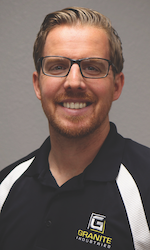 |
|
JEREMY RUPP |
Electric buggies gain popularity
One of the biggest advances in concrete equipment is all-electric power. It doesn’t matter where you look right now, from power tools to power buggies to heavy-duty equipment, electric power is growing in popularity. This trend will continue as electric power becomes even more efficient and run times get extended even longer.
Electric power offers serious benefits to the customer with zero emissions, zero noise and virtually zero maintenance. The units are generally simpler to operate and provide enhanced safety. The Overland 950 Series and 1400 Series electric-powered wheelbarrows offer a significantly improved user experience when compared to their gas-powered counterparts.
Anytime a rental center brings on new concrete equipment, it needs to consider the initial purchase price and long-term maintenance cost. When considering electric-powered equipment, there is normally a higher upfront purchase price due to more expensive components such as the electric motor, controller and battery pack. Yet in the long run, there is very little maintenance to perform on the electric-powered units, which offsets the higher purchase price.
Batteries are something that need to be replaced on electric-powered units, but many units still use AGM sealed lead-acid batteries, which are easy to find and are affordable to replace. Li-ion battery packs can last up to 10 years depending on the application, so while they may be more expensive to replace, they offer a very long expected life.
Another consideration with electric power is the estimated run time for the battery pack. Overland battery packs undergo rigorous testing to ensure they can last through an entire day of work. This gives confidence to the customer who wants to make sure the cart will last a full day.
Investing in electric-powered equipment is an excellent way for rental centers to increase demand for their equipment while increasing ROI. Electric-powered units have a high level of reliability due to fewer moving parts and sealed drive systems. This can lead to a higher ROI as there is less downtime for maintenance as well as a broader customer base due to the nearly unlimited applications. Electric power can be used indoors or outdoors and early in the morning due to near-silent operation.
Customers are increasingly looking for electric power, so highlighting the benefits of electric power can provide a competitive edge with other rental centers that are slow to adopt the new technology.
 |
|
PAUL STEIFFEL |
Technology improves tool productivity and life
At Metabo-HPT, engineers and tool designers are constantly looking to improve the solutions to customers’ needs in three ways via technological advances in portability, product durability, and ergonomics/fatigue reduction/safety.
Portability with cordless tools is a trend that will continue to grow as technology advances. Cordless tools increase productivity as workers do not have to search for electrical outlets as well as improve safety as there are fewer cords that workers can trip on and get injured. Advances in battery technology are making it possible to have cordless power tools with comparable performance to their corded counterparts.
Metabo HPT (formerly Hitachi Power Tools) has a hybrid cordless and corded platform available in its concrete power tools to meet the needs of casual and heavy-duty users. The MultiVolt platform offers the freedom of portability with little to no loss in power compared to corded models.
Brushless motors are a technological advance that greatly helps product durability. All Metabo HPT MultiVolt tools and select corded models feature brushless motors that have become increasingly common. By eliminating carbon brushes, brushless motors eliminate the No. 1 reason for maintenance: dust and debris entering the motor. They are also virtually maintenance-free and run at cooler temperatures. For added motor protection, engineers have designed power tools with dust covers to limit the number of airborne particulates that can enter the motor housing.
Split-core motors are another development that greatly helps product durability. Metabo HPT has angle grinders that include a split core motor, which allows for better heat dissipation and airflow between the divided coils for better cooling, thus increasing tool durability.
Material advances also help with power tool durability. Metabo HPT has rotary and demolition hammers manufactured with high-strength aluminum die cast with glass-reinforced resin (AHB). This allows the tool-generated heat to quickly dissipate. It also provides less vibration to the motor as well as providing extra protection against impacts and tool drops.
Advances in technology also assist in reducing user fatigue, which subsequently improves productivity and safety. Metabo HPT has rotary and demolition hammers with user vibration protection (UVP). UVP combines internal vibration absorbers and shock-absorbing handles for reduced vibration and improved operating efficiency.
Dynamic vibration absorbers reduce the vibration from demolition by moving a weight and spring in the opposite direction of the movement of the hammer. The counterweight with dual springs allows longer runtime without fatigue and reduces the risk of vibration-related injuries and nerve damage.
Metabo HPT has also introduced rotary hammer models with Reactive Force Control (RFC). This senses tool overload and stops the tool from rotation in instances where there may be a snag or an overload application. For angle grinders, on both slide or non-locking paddle-switch models, it can take some time for the wheel to stop, which can lead to injuries. To combat that, the G12BYEQ (4.5 inch) and G13BYEQ (5 inch) angle grinders are equipped with a brake that completely stops wheel motion within 1.5 seconds.
Rental centers should keep these advances in mind and show end users the benefits that power tool manufacturers have to offer. Rental centers can use such power tools to increase traffic in their stores. While the cost of these pales in comparison to large equipment rental centers offer customers, offering these tools as a rental allows them to test new technologies as well as not investing in tools they may not need for extended periods. Setting up events with vendors to train staff or having events for your customers as well as promotional deals with your vendors can help rental centers increase demand and ROI.
 |
|
ANGIE BROCKWELL |
Balance quality with price points
In the past year, Virginia abrasives has strived to bring higher quality products to market at an economical price. The Supreme core bits with Turbo segments are a primary example. These core bits offer a medium bond to work well with most aggregates and feature a well-balanced diamond concentration for optimum boring. The Turbo segments, which alternate with standard segments, provide a balance between fast cutting and extended product life, They are approximately 30 percent faster than Virginia Abrasives’ Premium core bits. The angle design on the segment tip allows for better accuracy with a slow start and the Turbo segment inside the bit provides better clean-out of slurry while drilling and boring. These supreme features are all included in a product at a price point that won’t break the bank.
Virginia Abrasives’ new Blue trowel blades are another product that offers a great price on a high-quality product. They work well on ride-on and push trowel machines and the customer can maximize their investment and get better pricing.
Time and again, customers report they want high-quality products at affordable prices, and that is what Virginia Abrasives strives to achieve.
When bringing in any new product line, especially in the professional market, it’s important the rental center staff is fully educated on the products that are being offered, their uses in the field and why the rental center is
offering this line. For example, staff members need to understand the aggregates and concrete hardness in their area and make product recommendations based on that. They need to know whether a trowel blade will work on a ride-on trowel machine. They need to know why a Turbo core bit will offer longer life than a standard core bit. Offering one or two products will benefit the customer; offering a full line will help many customers.
There are several factors that come into play to help a rental center increase demand and ROI.
The first thing to consider is that when investing in consumables, such as core bits or grinder tooling, is does the supplier offer an extensive line to meet the needs of the rental center’s customers.
When the customer knows that the rental center is the go-to source for their needs, they return more frequently for other jobs. Plus, they spread the news to their colleagues.
To increase ROI, do not buy the lowest quality products just because the price is cheaper. A higher quality might be 30 percent more expensive than the lower quality, but the higher quality may provide two or three times the life, which ultimately is a better investment because more rentals mean more return on the investment.
This article orginally appeared inthe January-February issuw of Pro Contractor Rentals magazine. ©2022 Urbain Communications LLC. All rights reserved.



